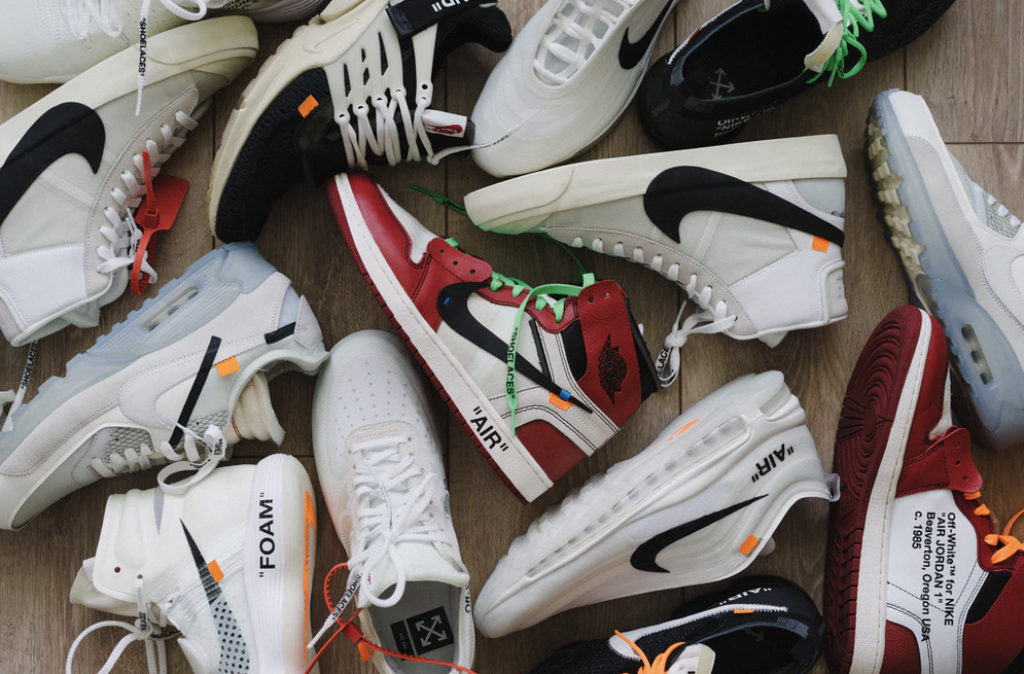While once the symbol of athleticism, sneakers have transcended their primary function to become commercial and fashionable objects of desire. From sportswear staples to high fashion status symbols, sneakers have made their mark as cultural commodities, and in the process, the global sneaker market has blossomed into a nearly $80 billion industry as of 2020 and is predicted to reach $120 billion by 2026. With such significant growth at play, it is unsurprising that sneakers make for big business.
The last decade has seen a huge shift in how sneakers are worn. Donning a pair is no longer frowned upon in the workplace (in many cases) or for more formal occasions, and even British etiquette experts Debrett’s have given their seal of approval, deeming sneakers socially acceptable for smart casual occasions. At the same time, the continued dominance of the athleisure trend has had a significant impact on the growing sales of sneakers – paired, of course, with the pursuit of comfort. This existing trend only accelerated during the pandemic as lockdowns made people further prioritize comfort, which resulted in a rise in sales of loungewear, athleisure, and flat shoes, such as sneakers. As such, sneakers have moved from sportswear-exclusive footwear to objects with serious fashion credentials. In fact, footwear is now the biggest selling category in the online luxury market, and sneakers have made a significant contribution to this growth.
All the while, high fashion brands – from Gucci to Balenciaga – have helped to set the pace in the luxury sneaker market. In 2017, Balenciaga’s Triple S, for instance, became the biggest seller in the luxury sneaker market and its popularity has largely seemed unstoppable since. (And who could forget Phoebe Philo’s embrace of adidas’ Stan Smith sneakers at the height of her tenure at cult-favored brand Celine?)
Such are the strides in the sneaker industry that a new exhibition at London’s Design Museum explores how the shoe became an undisputed cultural symbol of our times. To understand how the sneaker has emerged to become a footwear phenomenon in its own right, it is important to trace its legacy from function to cultural icon.
From tennis shoes to track
The earliest sports shoes were created by The Liverpool Rubber Company, founded by John Boyd Dunlop, in the 1830s. Dunlop was an innovator who discovered how to bond canvas uppers to rubber soles. These were known as sandshoes and worn by Victorians on their beach excursions. Historian Thomas Turner defines the latter decades of the 19th century as a time when industrial progress and social change were twinned with a growing enthusiasm for sporting pursuits, in particular lawn tennis. This resulted in the need for a more specialized type of footwear, which Dunlop’s rubber sole could fulfil. Dunlop launched their now iconic, Green Flash model in 1929, which was worn by tennis legend Fred Perry at Wimbledon.
Other significant sports shoes of the 20th century included the Converse All Star, designed for basketball. However, it is Nike and adidas that have both shaped the sneaker’s evolution from sport to style. Founded by Adi Dassler in Germany in 1924 as “Gebrüder Dassler Schuhfabrik,” the company later rebranded as adidas in 1949. The brand created the first track shoe with a complete leather sole and hand-forged spikes, which was worn by Jessie Owens at the 1936 Berlin Olympics.
Fast forward to 1964, and Nike was created by Bill Bowerman and Phil Knight, initially as Blue Ribbon Sports, but ultimately, rebranded as Nike in 1971. The rise of the Beaverton, Oregon-based titan coincided with the running craze that hit America, with Nike’s first commercial design being its Cortez shoe, which was specifically cushioned for running. The once-humble sneaker was worn by Tom Hanks in Forrest Gump, thereby, securing Nike’s cultural status.
The commercialization of cool
Research by the sociologist Yuniya Kawamura defines three waves of the sneaker phenomenon. The first wave in the 1970s was defined by an underground sneaker culture and the emergence of hip-hop. Adidas’ Samba design, as a key example, became a key part of Terrace Fashion within football fan subculture. In 1986, Run-DMC released the song “My Adidas,” leading to a sponsorship deal with the brand, serving to forge the sneaker’s deep-rooted place in popular culture.
After that, the second wave of the phenomenon began in 1984 with the launch of Nike’s Air Jordans, a move that gave rise to the commodification of sneakers and their desirability as status items, fueled, in large part, by big-name celebrity endorsements, such as with the Jumpman, himself. Finally, for Kawamura, the third wave is marked by the digital age, complete with burgeoning growth in sneaker marketing and resale culture, the latter of which was valued at $6 billion in 2019 and is forecast to be worth a whopping $30 billion by 2030.
The growing presence of “sneakerheads,” i.e., avid sneaker fans that collect and trade sneakers, has ensured continued demand for such footwear, and more specifically, cemented the staying power of an array of specific sneakers styles as cult status symbols. Nike and adidas routinely release limited editions shoes associated with a celebrity, hip-hop star or athlete, and it is not unusual for people to go to extreme lengths to get their hands on these rare models, queuing through the night or paying hundreds – if not thousands – for certain pairs. Examples include Nike’s Air Yeezy 2 “Red October,” Air Jordan x 1 Off-White “Chicago,” and Kanye West’s Air Yeezys, which were put up for auction by Sotheby’s in April for $1 million, not only making them Sotheby’s most expensive shoe listing ever, but making them a shining example of the heights reached by the lucrative sneaker resale market.
From sport to fashion, sneakers dominate the consumer market. Yet, despite their adoption by the mainstream, sneakers retain their coolness as cultural icons.
Naomi Braithwaite is a Senior Lecturer in Fashion Marketing and Branding at Nottingham Trent University. (This article was initially published by The Conversation.)













